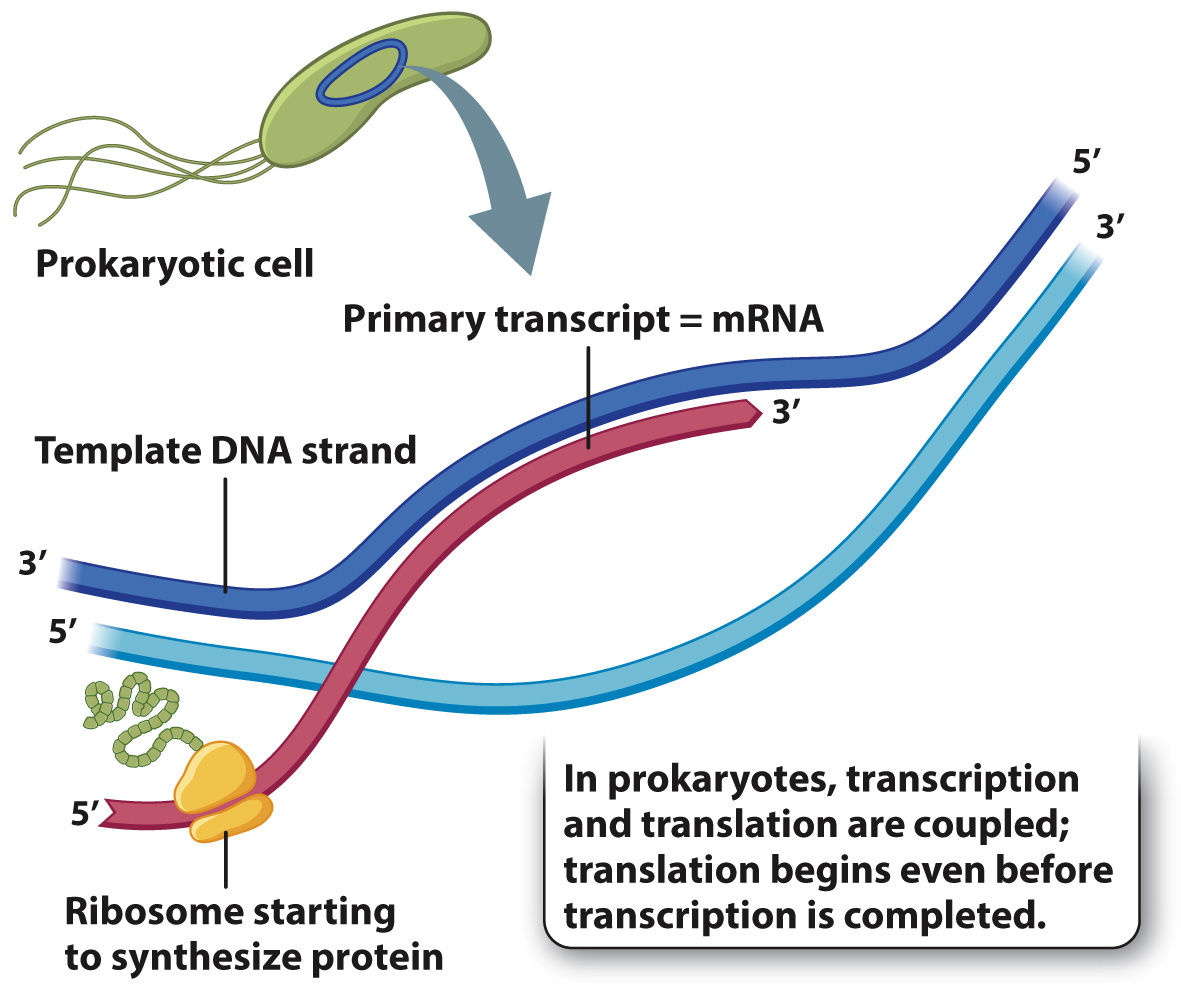Messenger RNA carries information for the synthesis of a specific protein.
In prokaryotes, the relation between the primary transcript and the mRNA is as simple as can be: The primary transcript is the mRNA. Even as the 3′ end of the primary transcript is still being synthesized, ribosomes bind with special sequences near its 5′ end and begin the process of protein synthesis (Fig. 3.20). This intimate connection between transcription and translation can take place because prokaryotes have no nuclear envelope to spatially separate transcription from translation; the two processes are coupled, which means that they are connected in space and time.

Primary transcripts for protein-